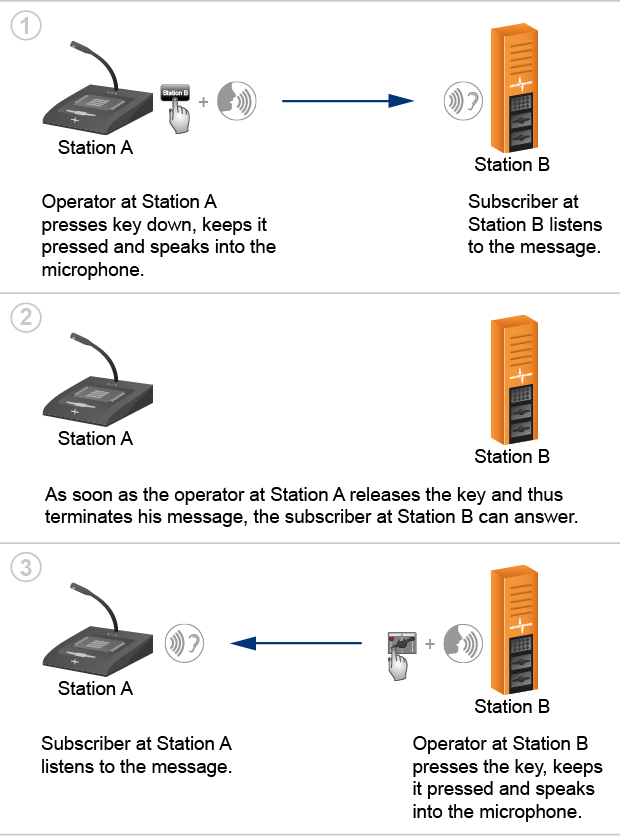From unidirectional voice announcements through to conferences with several subscribers – communication and public address systems provide a wide range of functions. For you to gain an insight into the possibilities of such systems I would like to use this blog to introduce you to different functions in the coming weeks and months. This week I would like to start with “Direct Two-way Communication“.
Two-way Communication
In principle, a two-way connection provides communication in both directions (bidirectional) where two subscribers can speak and listen alternately, but not simultaneously. One subscriber speaks and the other listens. Only after one subscriber has finished his message and has released the key, the other can answer.
To establish a direct two-way connection you require at least two intercom stations of any type with one direct call key each. A direct call key is a key with which you can establish a voice connection to a pre-defined target by pressing it down.
You require an individual direct call key for each target. If you want to establish direct two-way connections to 5 different targets with your intercom station, you need 5 direct call keys.
Communication Procedure
To establish a two-way connection the operator at Station A presses the direct call key configured with Station B as target first, keeps it pressed and speaks into the microphone (Push-to-Talk). The subscriber at Station B listens to the message.
As soon as the operator at Station A releases the key, the subscriber at Station B can answer (step 2). To do this, he presses the direct call key configured with Station A as target, keeps it pressed and speaks into the microphone (step 3). So both subscribers can speak and listen alternately, but not simultaneously.
The following illustration shows the communication procedure.

Key Signaling
LEDs at the keys indicating the different connection states are helpful for the operator personnel. I already described the most common types of signaling in one of my last blog articles (please refer to Key Signaling).
Priorities
You can also assign a priority for each two-way connection. This means that an active connection remains busy for other subscribers with the same or a lower priority. The connection can only be interrupted by a voice connection or function with a higher priority.
Download a more detailed version of this blog article as PDF here.